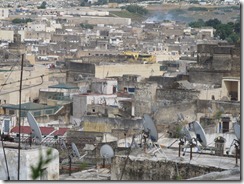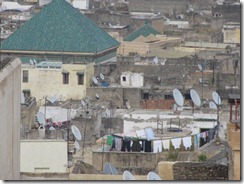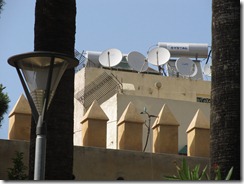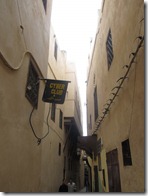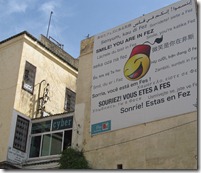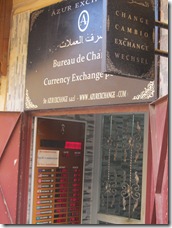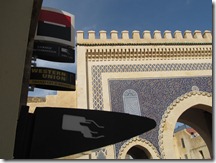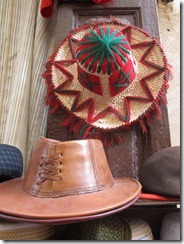 The Medina of Fez is 12 centuries old; it has been the symbol of conservatism, traditions and authenticity. Today, it is introduced to the global market. Aspects of globalization are everywhere. This creates a certain kind of ambivalence, for example an American tourist walking in the narrow street of the medina would find it peculiar to look at Century 21 followed by “Medina Real Estate” knowing that Century 21 is an American Real Estate agency par excellence. So coming from America to see an American agency in the old medina of Fez could be a shock. Some aspects of globalization are rather parasites that disturb the authenticity of the oldest Medina of Morocco.
The Medina of Fez is 12 centuries old; it has been the symbol of conservatism, traditions and authenticity. Today, it is introduced to the global market. Aspects of globalization are everywhere. This creates a certain kind of ambivalence, for example an American tourist walking in the narrow street of the medina would find it peculiar to look at Century 21 followed by “Medina Real Estate” knowing that Century 21 is an American Real Estate agency par excellence. So coming from America to see an American agency in the old medina of Fez could be a shock. Some aspects of globalization are rather parasites that disturb the authenticity of the oldest Medina of Morocco.
Globalization is the process where the boundaries are broken so that there is interchange with the whole world, via means of communication, tourism, commerce, and migration. However, it could damage a nations’ identity. Globalization leads to the transformation of the society, it changes the practices and shapes the values to fit within the global culture, a culture that is shared and has almost no sense of belonging or specificities.
There are many facets of globalization in the Medina: Western products, Western music, American and European agencies, satellite dishes, air conditioning, cell phones, internet cafes, banks, antennas, to name a few. In this article, I will focus on two clear icons of globalization in the Medina, the cyber cafés and Western Union agencies. The Medina, the supposedly live museum is now all furnished with global icons. Decades before, it would have been so strange to see such signs in the Medina.
Cyber cafés are very symbolic being located and scattered all over the narrow streets of the Medina. Internet is the means by which one accesses the whole globe, discovers new cultures, learns about new practices, and also listens to foreign and/or Western music. Coming out from the cyber café, one brings out with him/her this culture and introduces it to others, a greeting of “Hi!” and the “cool” culture, for example, a star’s haircut, etc.
Western Union and such exchange agencies facilitate drawing out and exchanging money for the tourists from different countries. They have access to their accounts wherever they are, including the Medina. It has become a normal and expected service to find in the Medina, in one’s targeted language and in all foreign currencies.
Interestingly though, many global icons were re-shaped and re-considered by the Moroccan consumers to fit their basic needs and make of them a somewhat Moroccan product or at least a Moroccan style one. This could be justified by the interaction of the local and the global to give a ‘glocal’ product, even in terms of language.
Globalization does have an impact on the local culture. The medina of Fez as a local space has become connected with the globe. With globalization, identities could be detached from their local community.
* All photos are taken by the author.
* Click on the photo to enlarge it.
* Write a comment if you have a question and/or feedback.



